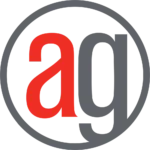
General FAQs
AlphaGraphics Saudi Arabia is a locally owned and operated international 360-degree marketing company with in-house printing and production facilities.
Alphagraphics is located in Khobar, Saudi Arabia in Dhahran Tower, Madinat Al Umal, 34443.
AlphaGraphics is an experienced 360° marketing, printing and signage services provider. With a team of experts, AlphaGraphics has the knowledge, the skills, the art, and the experience to handle any project from idea to completion.
Since 1970, AlphaGraphics has been providing proven marketing services for businesses. We provide marketing services including branding, website mobile application development, SEO, social media management, media buying, and more.
You can Contact us or request an online quotation.
Yes, we do large-scale printing of all types. All you need to do is to provide us with the exact size
We have our own team of professional drivers who will take care of your order from our facility to your doorstep.
If you’re working within a time constraint, let us know when you call for a quotation. We look at our print production schedule to ensure that you will meet your deadline.
We have our own team of professional drivers who will take care of your order from our facility to your doorstep.
We have our own team of professional drivers who will take care of your order from our facility to your doorstep.
File Details FAQs
We prefer PDFs (Portable Document Format) with a bleed of at least 1/8″ and crop marks. Most office and design software lets you store or export files in PDF format.
If artwork adjustments are required, the original file may be required.
The resolution should be set to 300 DPI. Pictures and graphics pulled from the internet are often low resolutions, typically 72 DPI or 96 DPI. Avoid these graphics, as they will appear pixelated and blocky when printed. Also, save all photos in CMYK mode, not RGB, when possible. Images saved in RGB mode may not print properly. If you are unable to save your image in CYMK mode, please let us know.
Sending your artwork fonts as delineated objects in your original file is the best method to ensure they print appropriately. If your program doesn’t allow it, packaging the fonts or emailing them to us would suffice.
If you have any questions regarding how to correctly transmit your typefaces, please call us and we’ll be happy to assist you
Printing FAQs
A proof document is a one-time copy of your document after all revisions and printing setup steps have been completed in printing terms. It’s your last and best chance to make sure your print work looks exactly how you imagined it. You may help assure the exact, perfect delivery of your print work the first time by carefully reviewing the proof.
Nope! Some printing methods are more cost-effective than others. Our professional team will gladly assist you in determining which printing method is best for your project
Absolutely not! We handle all the “back-end” production for you.
The terms are pretty easy to understand, though. Colour separation refers to our offset printing process, where we use cyan, magenta, yellow, and black in four separate plates that go directly to the press. These four colours can create almost any colour you can imagine!
Half-tone printing refers to converting a solid tone of black ink or one colour into tiny dots that are invisible to the eye to create your image. You see a solid image, but it’s really created from the spacing of these tiny dots.
Normally, no. White print is recognised as the lack of ink because white is the default colour of paper.
We have a large collection of “house” stocks in our production area.
If you have a specific style in mind, we will check our in-house inventory for availability. Or, we will check with our paper vendors to see what they have on hand. Keep in mind that special stocks or materials may require bulk purchasing from suppliers.
The Pantone Matching System (PMS) is a colour reproduction standard in which colours all across the spectrum are each identified by a unique, independent number. The use of the Pantone Matching System allows us to precisely match colours and maintain colour consistency throughout the printing process.
In short, printers and monitors produce colour in different ways. Monitors use the RGB model (red, green, and blue), which usually supports a wider spectrum of colours. Printers use the CMYK model (cyan, magenta, yellow, black), which can reproduce most—but not all—of the colours in the RGB colour model.
Depending on the equipment used, CMYK colours generally match 85–90% of the colours in the RGB colour model. When a colour is selected from the RGB model that is out of the range of the CMYK model, the application chooses the closest matching colour. Programs like Adobe Photoshop will allow you to choose which colour will be replaced; others may not. We’ll provide you with a sample print right before we print your job to ensure a “what-you-see-is-what-you-get” final product

